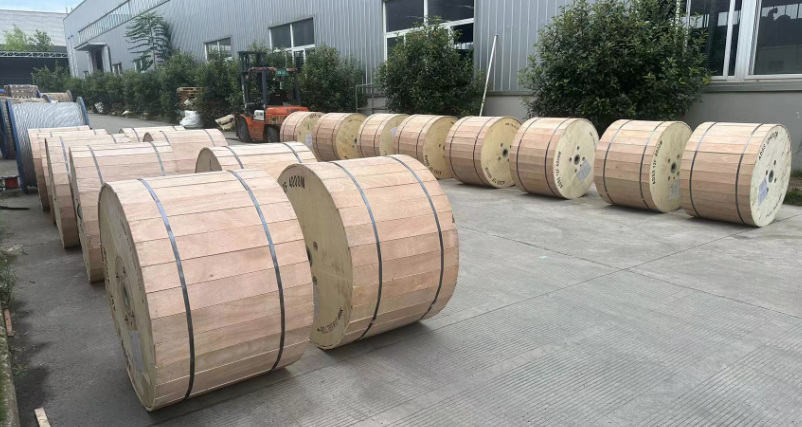ADSS (All-dielectric Self-supporting) cable is a type of fiber optic cable that is strong enough to support itself between structures without containing conductive metal elements. Both single mode and multi-mode fibers can be arranged in ADSS cables with a maximum of 144 fibers.
Description:
ADSS cable is a type of fiber optic cable that is strong enough to support itself between structures without containing conductive metal elements. Both single mode and multi- mode fibers can be arranged in ADSS cables with a maximum of 144 fibers. ADSS fiber optic cable is designed for outside plant aerial and duct applications in local and campus network loop architectures from pole-to-building to town-to-town installations. The cabling system that includes cables, suspension, dead-end, and termination enclosures offers a comprehensive transmission circuit infrastructure with high-reliability performance.

| Fiber count | 2~144 |
| Loose tube | Colored fiber in PBT loose tube,filled with fiber gel |
| Central strength member | Non-metallic strength member FRP(fiber reinforce plastic rod) |
| Waterproof layer: | Cable core filled with cable gel or water blocking tape,water blocking yarns |
| High-strength aramid yam: | Offers very high tensile strength,small diameter and light weight to fit different climate consitions and laying spans |
| Sheath | Anti-tracking(AT) material or Polyethylene(PE) |
Structure:
The structure of ADSS cable can be divided into two categories—central tube structure and stranded structure. In a central tube design, the fibers are placed in a PBT loose tube filled with water-blocking material within a certain length. Then they are wrapped with aramid yarn according to the desired tensile strength and extruded with PE (≤110KV electric field strength) or AT (≥100KV electric field strength) sheath. This structure features with small diameter and light weight but has limited lengths.

In a stranded structure design, the inner optical fibers and water-blocking grease are added into the fiber loose tube, and different loose tubes are wound around the central reinforcement (usually FRP). The rest parts are basically similar to the central tube structure. This type is able to obtain longer fiber lengths. Although the diameter and weight are relatively big, ADSS cables with this structure are better to be deployed for large span applications.

Advantages of ADSS Cable:
· Its dependability and low fiber cable price.
· A fiber optic cable is strong enough to allow installation lengths of up to 700 meters between support towers.
· ADSS cable is lightweight and small in diameter to reduce the load on tower structures caused by cable weight, wind, and ice.
· To maintain low optical loss throughout the cable’s life, the internal glass optical fibres are supported with no strain in the cable’s design.
· The cable is jacketed to protect the fibers from moisture.
· The jacket also shields the polymer strength elements from the effects of UV light from the sun.
· Circuits up to 100 km long are possible without repeaters using single-mode fibre cables and light wavelengths of 1310 or 1550 nanometers.
· A single cable can transport up to 144 fibers.
Application:
· Utilized for telecommunications by power utilities, telcos, railways, and private network groups
· Designed for installation on distribution and transmission lines
· Capable of being installed in close proximity to conductors
· Suitable for underbuild applications, minimizing the need for outages
· Used for telecom networks where quick, low-cost installation is a priority
· Used in FTT-X applications like FTTH (Fiber to the Home)
Package:
